Volleyball is a game of complex rules that without prior knowledge may lead players, fans and spectators alike rather confused as to just what exactly is going on.
In this article I am going to cover the basic rules to ensure that you can keep up and understand the game as it’s played.
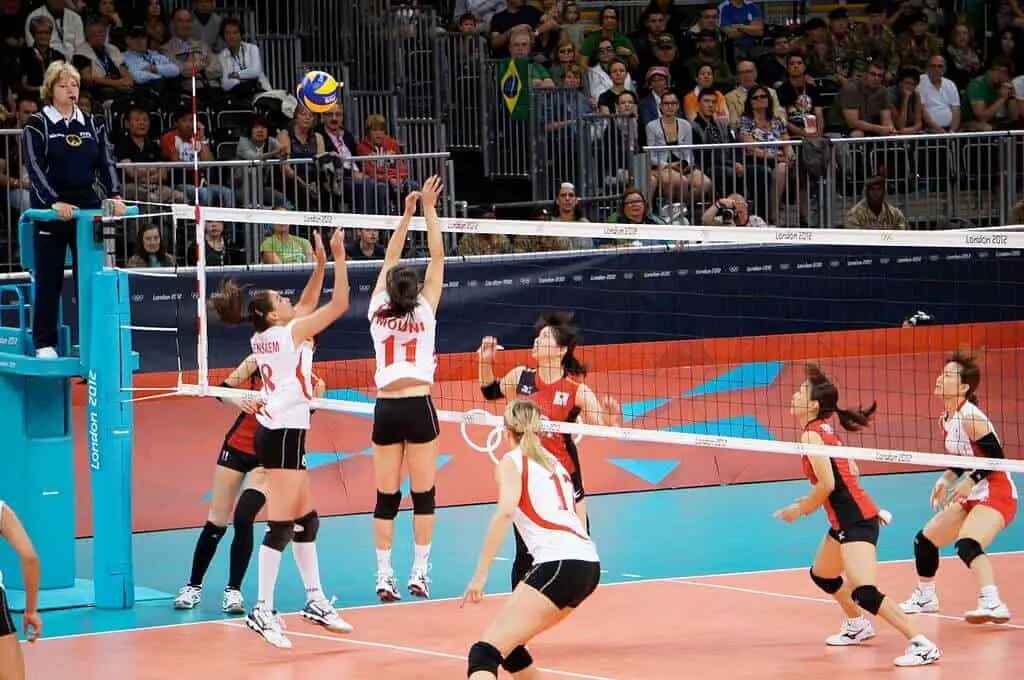
Now in order to cover the basic rules I will go over the main core skills, movements and plays and break down the most common rules related to each of them.
Table of Contents
General Game Rules
- Volleyball is played with 6 players on each team
- The 6 players are split into 3 front row players and 3 back row players.
- The 3m (10 foot line) is what splits the front row from the back
- Each team is allowed a maximum of 3 touches before the ball is played back over the net.
- A Player is not allowed to touch the ball twice consecutively (with the exception of a block). This means that if a player keeps the ball alive they can’t then play a second touch without a teammate first touching the ball. However if a player blocks the ball this is not classified as a touch in terms of team touches and therefore the blocker can play the ball again.
- Volleyball is played up to 5 sets. This means a team can win 3 sets to 0, 3 sets to 1 or even 3-2
- A volleyball set is played to 25 points, however, a team must win by 2 clear points. This means if the score line is 24-24 the game continues until a team reaches two clear points. These score lines are used for all set excluding the 5th. The 5th set which is the decider is played to 15 points only. However again a team must win by 2 clear points.
- Each rally starts with a service. At the start of the game a team will be awarded to serve or receive this is normally done with a game of chance such as a coin flip or alternatively things such as home team, away team may come into play. During game play the team that wins the last point will take the serve
- A point is won either by getting the ball to land on the opponent’s side, making the ball goes out of bounds after touching your opponent first, the other team committing a fault of violation, or in very rare cases sportsmanlike misconduct.
- If the ball lands on any of the perimeter lines it is considered in.
- If the ball strikes the net is still considered live and can be played again. This is true regardless of whether it happens from a serve, hit or general play.
- A ball is considered out of play if any of the following circumstances occur: The ball is hit out of the perimeter lines, The ball is played off you and lands out of bounds, The ball contacts the antenna, The ball contacts any part of the net or post outside the antenna, The ball hits the referee stand, The ball hits the ceiling or any other non-playable area
- The player can utilise any part of the body to play the ball, this includes: arms, hands, feet, knees etc..
- A Team must stand in the correct rotation at the start of every rally
- If a team wins a point of their opposition’s serve the must rotate 1 position clockwise.
- A Team can rotate positions once the serve has taken place
- If two people contact the ball at the same time, it is considered one action and either of the players can play the ball a second time.
- It is illegal to block or attack a serve from within the 3m line
- It is illegal to lift, catch, carry or throw the ball during rally play.
- Officials include: referee, assistant referee, scorer, assistant scorer, Line judges
Rules Relating To Serving In Volleyball
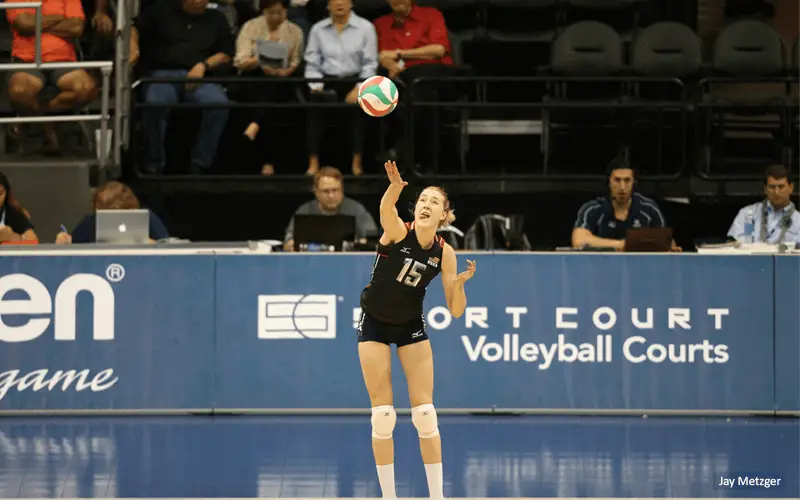
- A server must ensure they contact the ball before the baseline, If the server steps on or over the baseline before contacting the ball a foot fault would be called.
- The correct server in the rotation must serve, if the wrong person serves a point will be awarded to the other team
- If the server tosses the ball badly and catches it to try again this is a fault and the other team will be awarded the point. However, If the server allows the ball drop to the floor the referee will allow the server to collect the ball and have another serve
- Although The server must be behind the baseline, it is illegal to serve the ball from without side the service zone (this is the area directly behind the baseline although still within the sidelines if they were continue beyond the baselines)
- A player can not start their serving action until the referee has signalled to do so.
- The server must contact the ball within 8 seconds of the referee signalling the server to start.
- The ball must make it to the opponent’s side by going over the net unassisted by teammates.
Rules Regarding Attack Hitting
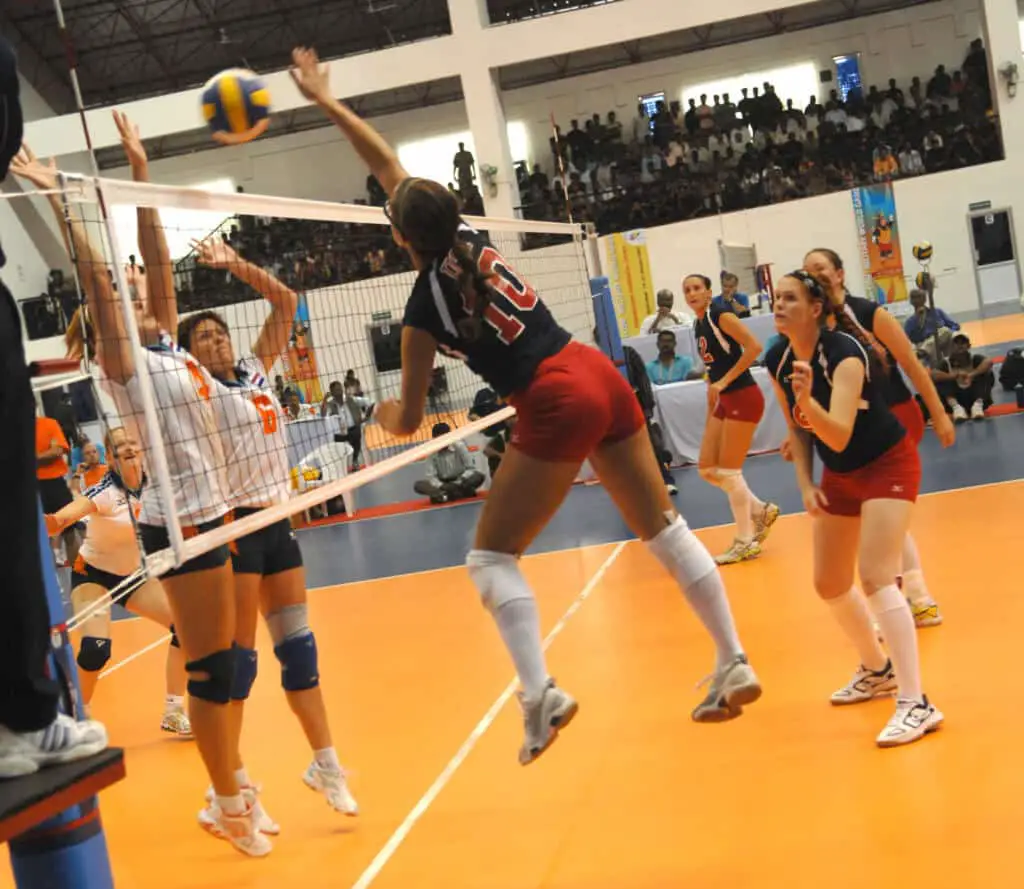
- The Ball must land in the court on the opponent’s side in order to score a point from a hit
- If a player hits the ball and it comes off of an opponent before landing out of play the hitter would be awarded the point
- The hitter must not touch the net during the rally
- The hitter must ensure they land on their own side of the court after attacking the ball. If the player lands on the centre line this is acceptable, however if their full foot lands over the other side of the line this would be considered a fault
- An Attack is classified as any action that directs the ball towards the opponents side with the exception of blocking and serving.
- A front court player can hit the ball from anywhere on the court
- A backrow player is not allowed to play the ball from within the 3m line that is above the height of the net. The exception to this rule would be if the player jumps before the 3m line than the player can attack the ball from within the 3m line that is above the height of the net.
- A libero is not allowed to attack the ball that is entirely above the height of the net
Rules Regarding Blocking
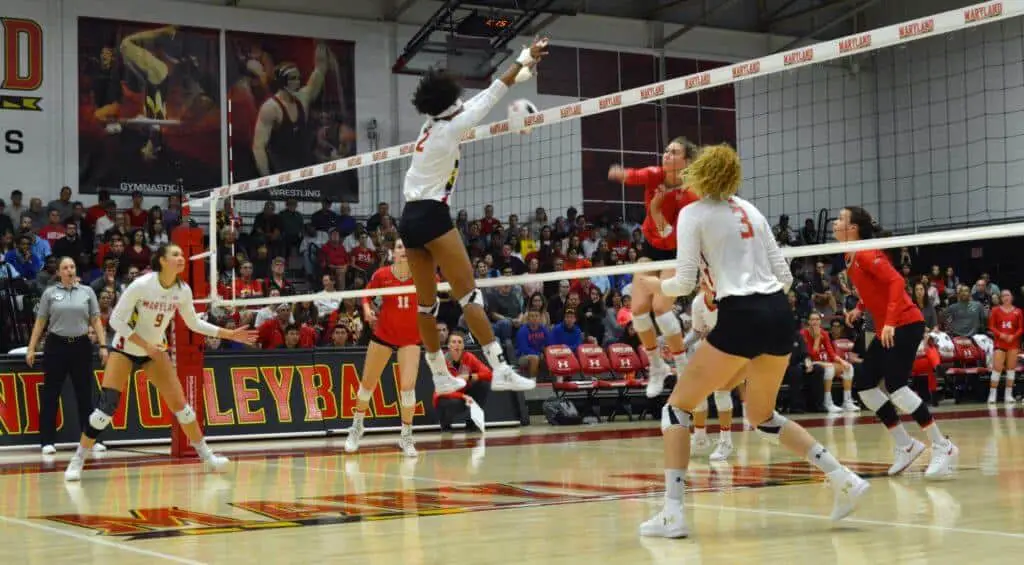
- A block is defined as the action of reaching above the height of the net to intercept a ball from coming over the net from an opposition attack.
- Only front players are permitted to block
- A block is only counted if the ball contacts the player above the height of the net. If the ball hits the player below the height of the net this would be considered a touch leaving the team two touches to get the ball back over the net.
- Consecutive touches are allowed provided they are during the same action of blocking.
- In blocking it is permitted to reach over into the opponent’s space as long as it does not interfere with the opponents play.
- A Ball can blocked in your opponents space if they opposition has executed an attack hit.
- The first hit directly after a block can be executed by any player, including the blocker. Due to this fact the block does count as a touch meaning subsequently a team has three remaining touches following a block.
- Under no circumstances can you block a service
- Neither a back row player or libero can block the ball
- A block must be executed between the antenna’s
- If a player blocks and the ball bounces off them and out of bounds, the attacking team would be awarded the point.
Rules Relating To Setting
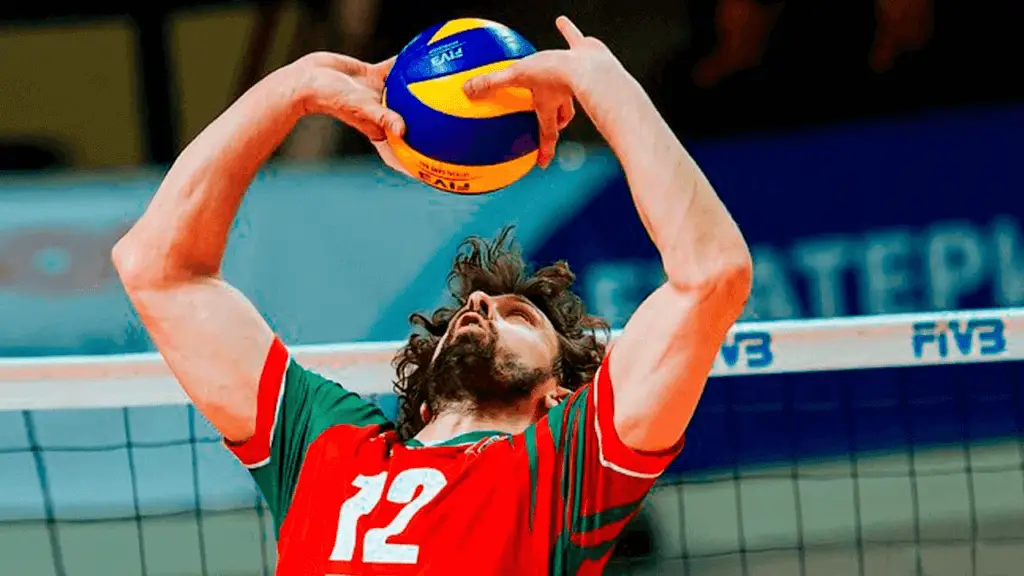
- The ball can not be touched twice consecutively by the same person. This is often called when setting if the ball does not leave both hands at the same time. This is known as a double touch
- The ball must not be carried, lifted or thrown. When setting it is quite common to be called on a lift (and or Carry). This would be called if the ball comes to rest in the setters hand before being released
- The setter can not play the ball above the height of the net from within the 3m line if there set travels directly over the net. This would be deemed as a back court attack
- A setter can not touch the net during the rally. If the net touch offers an unfair advantage or alteration to the rally a fault would be called
- The setter must also stand in the correct starting position before rotating to the setters spot once the serve has taken place.
